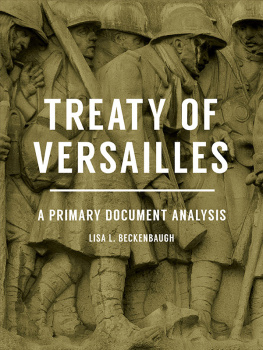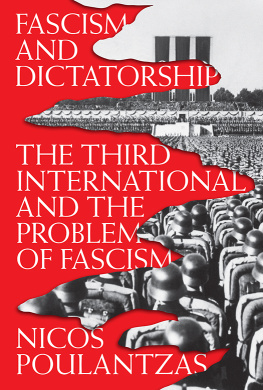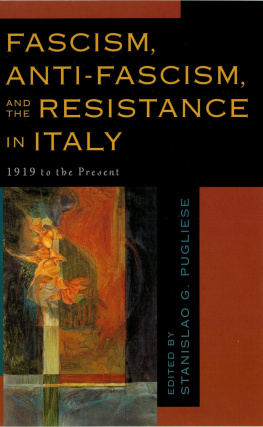
Recent Titles in Crossroads in World History
The Enlightenment: History, Documents, and Key Questions
William E. Burns
The Rise of Christianity: History, Documents, and Key Questions
Kevin W. Kaatz

Copyright 2016 by ABC-CLIO, LLC
All rights reserved. No part of this publication may be reproduced, stored in a retrieval system, or transmitted, in any form or by any means, electronic, mechanical, photocopying, recording, or otherwise, except for the inclusion of brief quotations in a review, without prior permission in writing from the publisher.
Library of Congress Cataloging-in-Publication Data
Names: Zander, Patrick G.
Title: The rise of fascism : history, documents, and key questions / Patrick G. Zander.
Description: Santa Barbara, California : ABC-CLIO, 2016. | Series: Crossroads in world history
Identifiers: LCCN 2015033421| ISBN 9781610697996 (hardback) | ISBN 9781610698009 (ebook)
Subjects: LCSH: Fascism--History. | BISAC: POLITICAL SCIENCE / Political Ideologies / Fascism & Totalitarianism. | HISTORY / Modern / 21st Century.
Classification: LCC JC481 .Z36 2016 | DDC 320.53/309dc23 LC record available at http://lccn.loc.gov/2015033421
ISBN: 978-1-61069-799-6
EISBN: 978-1-61069-800-9
201918171612345
This book is also available on the World Wide Web as an eBook.
Visit www.abc-clio.com for details.
ABC-CLIO
An Imprint of ABC-CLIO, LLC
ABC-CLIO, LLC
130 Cremona Drive, P.O. Box 1911
Santa Barbara, California 93116-1911
This book is printed on acid-free paper 
Manufactured in the United States of America
Every reasonable effort has been made to trace the owners of copyright materials in this book, but in some instances this has proven impossible. The editors and publishers will be glad to receive information leading to more complete acknowledgments in subsequent printings of the book and in the meantime extend their apologies for any omissions.
Contents
Alphabetical List of Entries
Topical List of Entries
KEY INDIVIDUALS
EVENTS
ORGANIZATIONS
WRITTEN WORKS (BOOKS, LEGISLATION, TREATIES)
PLACES
IDEAS, CONCEPTS, AND POLICIES
How to Use This Book
Throughout the course of history various events have forever changed the world. Somesuch as the assassination of Julius Caesarhappened centuries ago and took place quickly. Otherssuch as the rise of Christianity or the Enlightenmentoccurred over an extended period and reshaped worldviews. These pivotal eventsor crossroadswere departures from the established social order and pointed to new directions and opportunities. The paths leading to these crossroads in world history often were circuitous, and the routes which branched off from them led to developments both anticipated and unexpected. This series helps readers to understand the causes and consequences of these historical turning points.
Each book in this series explores particular crossroads in world history. Some of these events are from the ancient world and continue to reverberate today through our various political, cultural, and social institutions. Others are from the modern era and have markedly changed society through their immediacy and the force of technology. The books help readers to discover what happened, and to understand the causes and effects linked to each event.
Each volume in the series begins with a timeline charting the essential elements of the event in capsule form. An overview essay comes next, providing a narrative history of what occurred. This is followed by approximately 50 alphabetically arranged reference entries describing people, places, themes, movements, and other topics central to an understanding of the historical crossroad. These entries provide essential information about their topics and close with cross references and suggestions for further reading. A selection of 10 to 15 primary source documents follows the reference entries. Each document is accompanied by an introductory paragraph discussing the background and significance of the text.
Due to their critical nature, the events covered in these volumes have generated a wide range of opinions and arguments. A section of original essays presents responses to key questions concerning the events, with each writer offering a different perspective on a particular topic. An annotated bibliography of print and electronic resources concludes the volume. Users can locate specific information in the alphabetical list of entries, the list of entries grouped into topical categories, as well in the detailed index.
The various elements of each book are designed to work together to promote greater understanding of a crossroad in world history. The timeline and introductory essay overview the event, the reference entries offer easy access to essential information about key topics, the primary source documents give firsthand accounts of the historical event, and the original argumentative essays encourage readers to consider different views related to the events and to appreciate the complex nature of world history. Through its combination of background material, primary source documents, and argumentative essays, the series provides insight into historical causation as for those learning about the pivotal events that changed the course of history.
Preface
This book addresses one of the most significant, complicated, and destructive events of modern historythe rise of fascist dictatorship during the first half of the 20th century. This political movement originated and was centered in Europe, though it eventually influenced states across the globe. In Europe, at the end of the First World War in 1918, a variety of conditions came together to shape a new form of ultra-nationalism which eventually found enough mass support in some nations to produce dictatorial regimes during the 1920s and 1930s. In other European states such popular movements developed but never gained the mass support necessary to take power. These regimes and movements together espoused a belief system and a set of political practices that collectively came to be known as fascism.
Despite its often-violent nature and its tendency to victimize particular groups of people, many thought that fascist dictatorship was a necessary development to stop the spread of communism and to deal with the prolonged economic downturn that nagged Europe from 1918 to 1939. By the late 1930s, fascist or fascist-inspired dictatorships existed in Portugal, Spain, Italy, Austria, and Germany. It was the aggressive expansionist behavior of these dictatorships (particularly those of Italy and Germany) as they moved to conquer neighboring states that eventually took the world into the largest, most destructive conflict in human historythe Second World War. That war cost an estimated 60 million lives, and it left many powerful developed nations in ruins. During that conflict one fascist dictatorshipNazi Germanyinitiated an organized and industrialized project of mass murder against the Jews of Europe. Known as the Holocaust, by wars end it would see more than six million Jews and millions of non-Jews murdered in specially designed death camps.
How did the world come to such a disastrous moment? To even begin examining that question first requires gaining an understanding of fascism. Fascism changed nations dramatically during the 1920s and 1930s, suppressing individual freedoms and producing thousands of political victims. The fascist dictatorships also aggressively challenged the world order put in place by the Paris Peace Conference immediately after the First World War. That threatening behavior was the primary factor in drawing the world back into total war from 1939 to 1945. As such, the origins and development of this political phenomenon demand study and understanding. That is what this volume seeks to help provide. This book is intended to be an introduction to the subject for high school and undergraduate college students. It is designed to provide a brief historical narrative, but principally to serve as a study aid and reference resource.
Next page
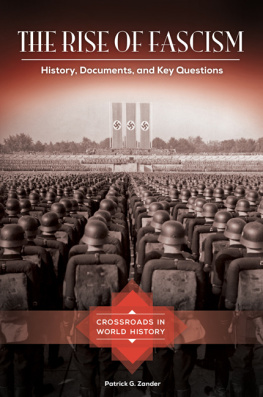


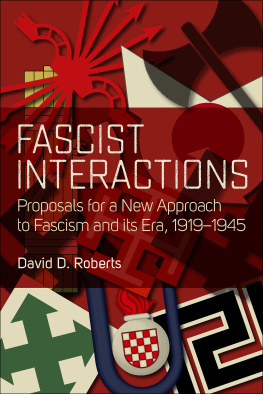
![Patrick G. Zander - Fascism through History [2 volumes]: Culture, Ideology, and Daily Life](/uploads/posts/book/262756/thumbs/patrick-g-zander-fascism-through-history-2.jpg)

